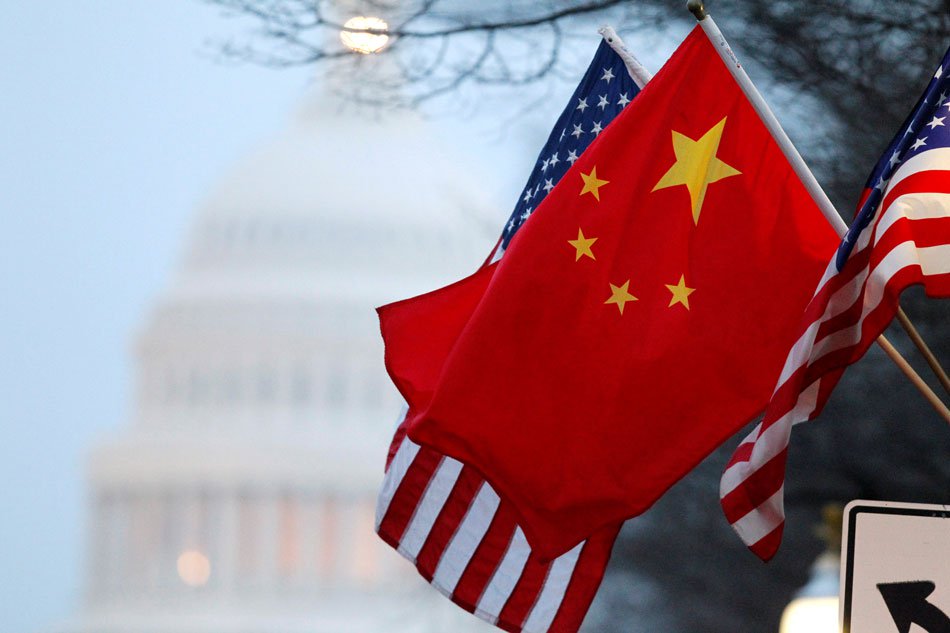
Sino-US economic cooperation improved in 2017, after a two-year slowdown.
The US economy was weak in 2016. Since 2010, China’s economic growth has slowed and fallen into doldrums. Both Chinese and US statistics show that trade between the two countries declined. Chinese total trade for the year fell by 6.7%; US total trade declined by 3.6%. In addition, due to the stronger dollar, US trade with China decreased for two consecutive years.
This situation changed in 2017. According to Chinese statistics, China-US trade amounted to $583.7 billion, an increase of 12.3%; exports to the US reached $429.8 billion, an increase of 11.5%; imports from the US reached $153.9 billion, an increase of 14.5%; the trade surplus with the US reached $275.8 billion, an increase of 9.9%. According to US statistics, bilateral trade reached $650.1 billion, an increase of 9.9%; imports from China reached $526.2 billion, an increase of 9.3%; exports to China reached $130.4 billion, an increase 12.8%; the trade deficit with China reached $395.8 billion, an increase of 8.2%.
Sino-US trade in 2017 accounted for 14.2% of China’s total trade. Exports to the US accounted for 19% of total Chinese exports and reached $526.2 billion if the re-export from Hong Kong is included, and the exports to the US accounted for 23.3% of total Chinese exports. Starting from 2012, the US was China’s biggest export market, surpassing the EU. According to US statistics, US-China trade accounted for 16.43% of total US trade, with imports from China accounting for 21.84% of total imports.
In contrast to its trade in goods, China’s service trade has experienced a big deficit for many years. Chinese statistics show China’s service trade totaled $120.1 billion in 2017; exports to the US reached $33 billion while imports from the US reached $87.1 billion, leaving China in deficit at $54.1 billion.
Since 2015, China has become the US’ biggest trade partner, exceeding Canada. China and the US have already become important trade partners to each other, enjoying mutual dependence, reciprocity, and win-win cooperation.
In recent years, Chinese enterprises’ non-financial investments in the US grew fast. According to Chinese statistics, China’s investment in the US in 2014 was $5.24 billion and grew by 30.7%, it reached $8.39 billion with an increase of 60% in 2015, $20.08 billion with a 139.3% increase in 2016, and $7.81 billion with a fall of 62% over the same period in 2017 ( due to the fact that the US government ramped up the security check and restrictions on Chinese investment; besides, China advocated rational investment to stabilize foreign exchange reserves). By the end of 2017, the investment from the Chinese mainland in the US reached $57.27 billion.
China’s non-financial investment in the US (including the investment via Hong Kong, Macao and free trade zones) was $14 billion in 2013, $11.9 billion in 2014, $15.8 billion in 2015, $45.6 billion in 2016 and $29 billion in 2017. By the end of 2017, China’s investment in the US reached $136.4. Steve Orlins, President of the National Committee on US-China Relations, said that China’s investment in the US created 140,000 jobs.
Since the financial crisis, more and more Chinese large and medium-sized enterprises have shown their enthusiasm in investing in the US. The US has a sound and transparent legal environment, advanced technology, well-trained employees, inexpensive energy, low logistic costs, good infrastructure, and first-class R&D capability. Above all, the US has sound sale channels and a huge market. For any commodity, if the US market is open, it means the world market is open. Since 2018, the Trump administration has substantially cut the corporate income tax, which will further attract Chinese enterprises to invest in the US. As the world’s top economy, the US needs the world’s funds to support its economic recovery and return to prosperity.
The US’ non-financial investment in China has continued to grow. Based on Chinese statistics, US investment in China was $2.37 billion in 2014, $2.09 billion in 2015, $2.39 billion in 2016, $2.65 billion in 2017, and reached $82.65 billion by the end of 2017. Rhodium Group statistics said that by the end of 2016, the US actual non-financial investment in China (including that via Hong Kong, Macao and Taiwan) reached $228 billion. China and the US have become each other’s important partner in investment.
In 2008, China and the US officially started bilateral investment treaty negotiations. In the 2013 China-US Strategic and Economic Dialogue, both sides agreed to negotiate based on pre-establishment national treatment and negative lists. At the end of 2014, the negotiation on the investment treaty text was finished and the negotiation on the negative list started at the beginning of 2015. China made great efforts in this regard. The items on the negative list declined from 190 in 2013 to 95 in July 2017. At the same time, China demanded that the US reduce or stop the non-economic restrictions on the enterprises’ investment, such as the so-called national security check. It was reported that only in the years 2016 and 2017, the Chinese investment projects subject to national security check and restrictions numbered as high as 27, seriously disrupting China’s investment in the US and bilateral cooperation.
The Bilateral Investment Treaty is an important part of China-US economic relations. A high-level bilateral treaty will help establish closer ties between the two countries, improve economic cooperation, mark a crucial step forward in setting up a China-US free trade zone, and will be in line with the major economic interests of the two countries.
During President Trump’s visit to China from November 8-10, 2017, China and the US signed a big trade deal worth $253.5 billion, about half of Taiwan’s total GDP. In the deal, Chinese purchases will reach $108.8 billion, account for 42.9% of the deal. China will purchase 370 Boeing planes for $30 billion, chips, aircraft engines, and auto parts for $26.2 billion, liquefied natural gas for $11 billion, soybeans for $5 billion, and other items like beef.
Investment in the US from Chinese enterprises will reach $131.7 billion, accounting for 52% of the deal. The investment includes China National Energy Investment Group’s 83.7 billion investment in West Virginia to explore oil and natural gas, Sinopec’s $43 billion worth of investment in Alaska to explore oil and natural gas as well as Chinese enterprises’ $5 billion investment in Wyoming to develop energy. The US has five investment items valued at $13 billion, accounting for 5% of the deal.
If all the above purchases and investments can be made, they will promote faster China-US economic cooperation and will be conducive to gradually narrowing the US trade deficit with China.
The Trump administration allows Chinese enterprises to develop projects in America’s vast, sparsely-populated, and relatively backward states. It clearly indicates the US’ wish to make use of China’s funds, technology, and labor to help President Trump revitalize the US economy.
The big deal also shows that the Chinese government is positively exerting efforts to alleviate the US trade deficit with China.



